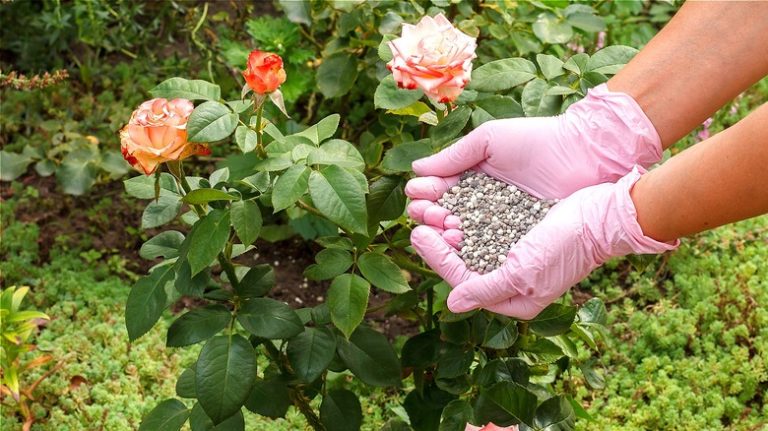Gardening can reduce stress and anxiety while encouraging physical activity and positive moods. Whether you plant herbs to use for dinner or just like vibrant flowers to gaze at, we can all join in on nature’s gift of growth. Perennials are popular to plant, as they can withstand the test of weather and remerge every year. Tulips (Tulipa) are one such popular perennial that many enjoy the sight of in early spring.
Tulips are one of the first beautiful flowers to appear during the growing season. Is it really spring without their colorful blooms? However, growing these bright plants can come with some challenges. If you receive too much rain, your tulips will die. They are susceptible to diseases like gray mold and bulb rot and insects like aphids, nematodes, snails, and slugs. Squirrels, rabbits, mice, and voles also feast on tulip bulbs. If you’ve studied everything you need to know before planting tulips and the bulbs still haven’t sprouted, it may be time to give a lookalike variety a try. We’ve listed 10 different kinds of flowers and, while they all don’t look exactly like tulips, they’ll still add a beautiful dash of color to your garden.
Snowdrops (Galanthus)
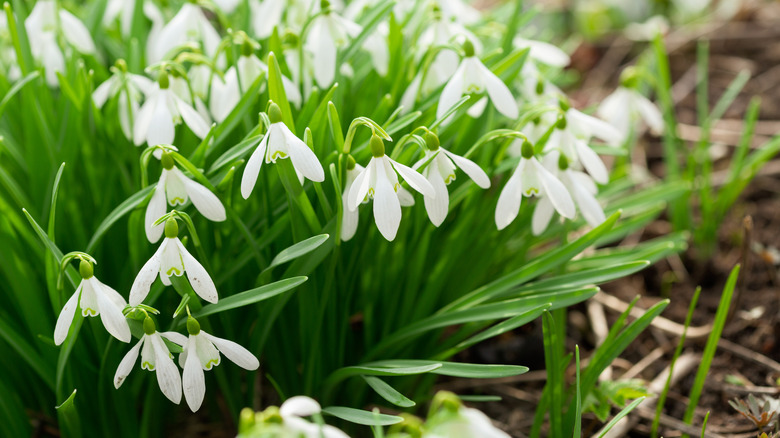
Snowdrops have white flowers that point downward. Their heads may hang, but they can raise your spirits, and the blooms can arrive in January. Planting snowdrops in February or March with young leaves is the best way to add them to your garden, though you can also plant them from dry bulbs in October or November. They do best in USDA zones 3 to 7. Moist, well-drained soil in partial shade and light water is all these lookalikes need, as they don’t need any pruning. They’re also toxic, so wear gloves and keep away from pets and children.
Daffodils (Narcissus)
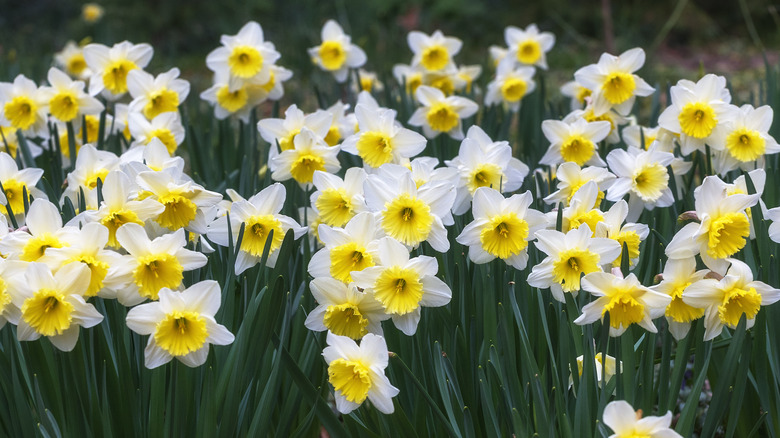
Bright daffodils have similar vibrant blossoms to tulips. With sunlight, water, and rich soil, you’ll see their crowns in no time. Plus, different varieties will thrive in any hardiness zone. Daffodils like full sun and well-drained soil to thrive because, like several other plants on this list, too much water can lead to rot. Watering once a week will suffice. You want to plant these beauties when the soil is roughly 60 degrees Fahrenheit, or sometime between September and November. If ingested, this flower is poisonous, so be cautious.
Rock garden iris (Iris reticulata)
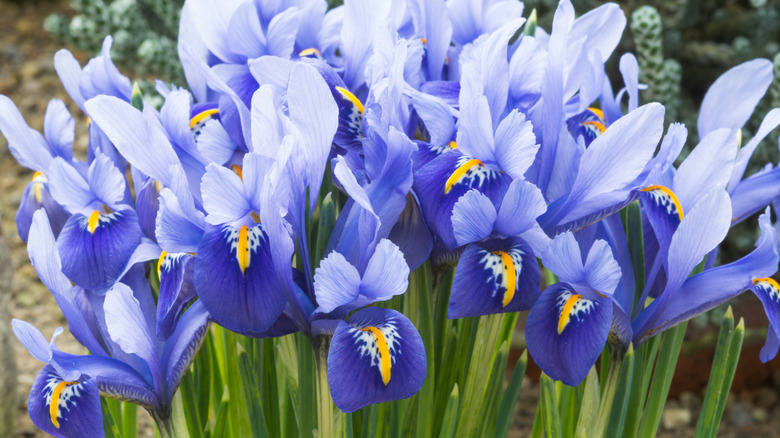
high fliers/Shutterstock
The rock garden iris is an easy plant to grow, though they can be toxic. Pollinators favor them, they bloom early in the spring, and they are resistant to some pests. With well-drained soil and at least partial sunlight, your rock garden irises should thrive. They can withstand a lack of water and nutrients, so they’re a great tulip lookalike if your thumbs are far from green. You can grow your irises anywhere in USDA zones 5 to 9. Plant these perennials in autumn and look out for their purple-blue petals in the spring.
Tommy crocus (Crocus tommasinianus)
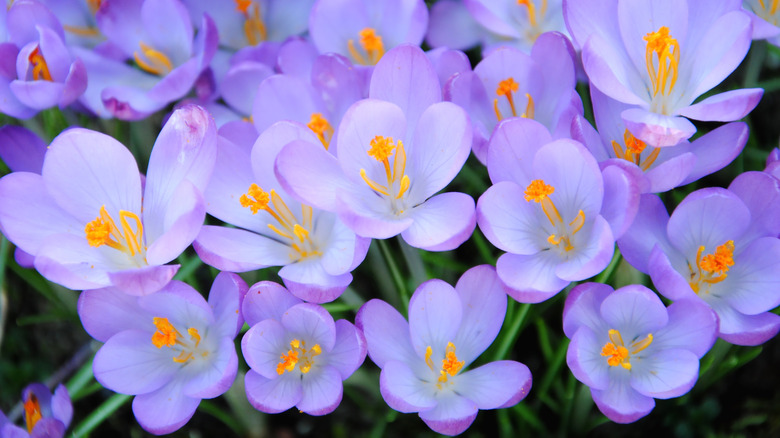
marineke thissen/Shutterstock
Your Tommy crocus should be in the ground before the first frost, typically by September or October. These perennials like partial to full sun and well-drained soil. They are adaptable and drought-tolerant, so you should have luck growing these flowers. However, USDA hardiness zones 3 to 8 are ideal. You can start seeing the lavender petals as early as the end of winter. Keep in mind that Tommy crocus can be toxic if ingested, so keep them away from children and pets.
Striped squill (Puschkinia)
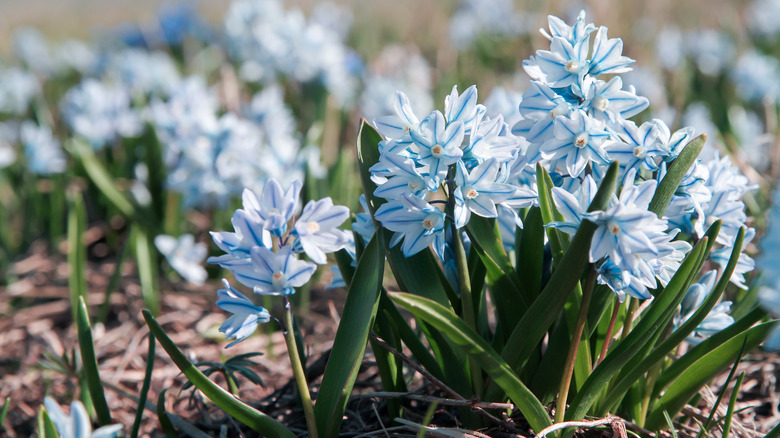
Daniel Tadevosyan/Shutterstock
The striped squill has pale blue flowers and tall grass leaves like tulips. They are actually a part of the Asparagus family. Planting these flowers as bulbs in gardening zones 4 to 8 is the best way to see their striped petals. You can start your squill garden from seed, but you won’t see blossoms until year four. With bulbs, just bury them in well-drained soil during autumn and in an area with at least partial sunlight. Disease and pests aren’t an issue with striped squill, so they are great for beginner gardeners, but they are poisonous.
California poppy (Eschscholzia californica)
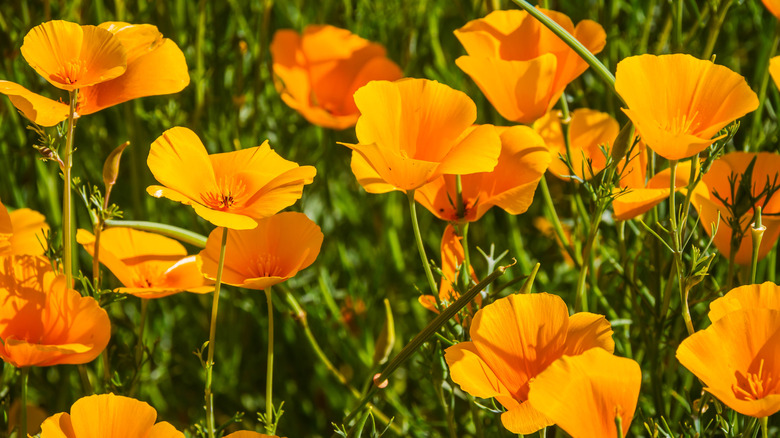
Jason Yoder/Shutterstock
Another plant great for beginners is the California poppy. Growing from seed is preferable, as these poppies usually can’t withstand the strain of being repotted. You can plant them in autumn or wait until mid-spring to the beginning of summer. Full sun and well-drained soil is all it needs to thrive, and skip the fertilizer. This California state flower is drought-resistant, and pests and diseases typically don’t invade, though they can be toxic. Garden zones 6 to 10 are best for these orange blossoms, and pollinators love this gorgeous flower.
Crown imperial (Fritillaria imperialis)
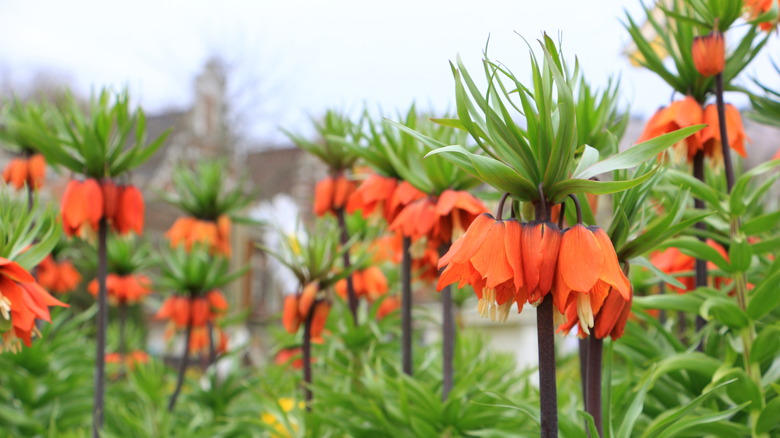
Aphichetc/Getty Images
The crown imperial can grow in USDA hardiness zones 5 to 9. It’s drought-tolerant and resistant to most common diseases but susceptible to leaf spot and mosaic virus. Planting the bulbs in autumn is the easiest way to add them to your flower collection. You’ll want to plant the bulb at a slight angle so water doesn’t collect in the spout and cause rot. Otherwise, they should grow in full sun with rich, well-drained soil. Because of their odor, they can repel pests. Crown imperials can be toxic, so keep them away from children and pets.
Autumn crocus (Colchicum autumnale)
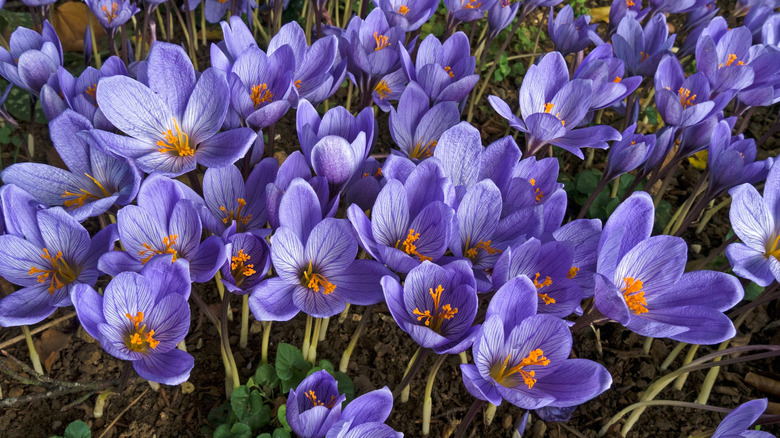
Fotimageon/Shutterstock
For a pop of color during the season when leaves are brown, look to the Autumn crocus. Plant these bulbs in August, and the purple and white flowers will spring up in the fall, hence its name. It takes roughly 4 to 6 weeks to see flowers after they have been planted. The autumn crocus thrives in full sun with well-drained, silty soil in USDA zones 5 to 9. It is part of the lily family, but be careful because these species are poisonous. It is critical to wear gloves when planting this flower.
Grecian windflower (Anemone blanda)
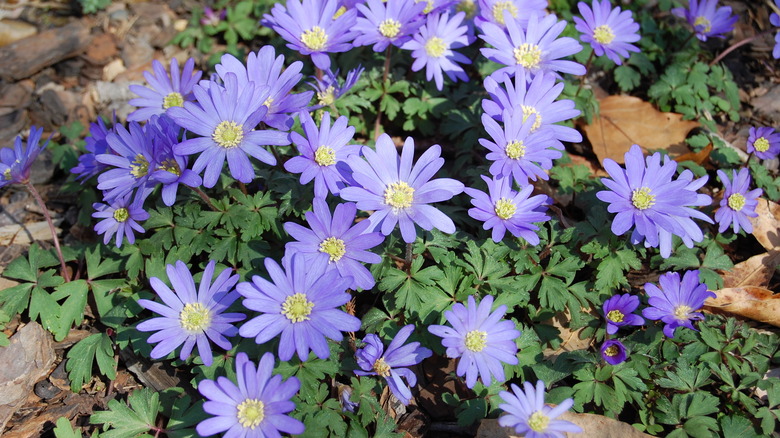
mhgstan/Shutterstock
Grecian windflowers are low-maintenance perennials. They mimic daisies more than tulips, but either way, you get a vibrant crown that creates a lush field you’ll want to run through. These wildflowers are another variety where growing from bulbs is best. Plant them in the fall and watch the petals arrive in late winter or early spring. Hardiness zones 4 to 9 are ideal for Grecian windflowers. Nutrient-rich, well-drained soil and full sun do the trick, but they also don’t mind a little shade. Keep children and pets away, as these plants are toxic.
Bellflower (Campanula)
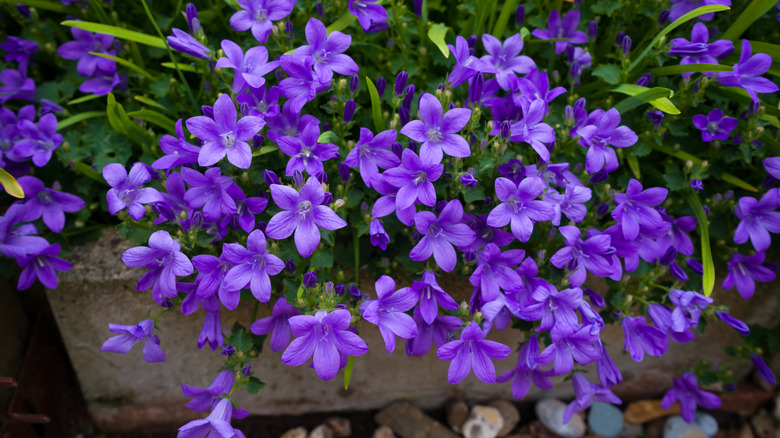
Maksims Grigorjevs/Getty Images
The bellflower is another easy plant to grow for beginner gardeners. You can plant these perennials from seed or bulbs. They grow well in the USDA plant hardiness zones 3 and up, just give them full sun and well-drained soil. Bellflowers are drought-tolerant and are not prone to disease. You can see their colorful crowns sprout in late summer to early fall and their petals will remain on display until the season’s first frost. However, keep in mind that some types are labeled as invasive and shouldn’t be planted, but they aren’t toxic.

